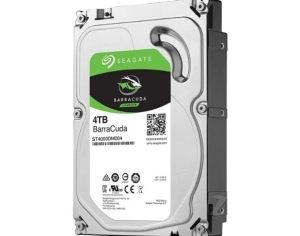When you get a brand-new Seagate Enterprise hard drive, one of the first questions you might ask is whether it requires formatting before use. This is a crucial step, especially for bulk buyers handling large-scale deployments. In this guide, we’ll break down everything you need to know about formatting a new Seagate hard drive, along with additional insights to help you make informed decisions.
Do You Need to Format a New Hard Drive Before First Use?
Yes, most new Seagate enterprise-grade hard drives come pre-formatted with a basic file system (typically NTFS for Windows or exFAT for cross-platform compatibility). However, depending on your specific use case—such as setting up a RAID array or using a different file system for performance optimization—you might need to reformat it. Here’s how to check and proceed:
- Step 1: Identify the Current File System – Connect the drive to a system and check its properties. Most Seagate Exos series drives are pre-formatted.
- Step 2: Choose a Suitable File System – For enterprise use, NTFS (Windows), ZFS (Linux/RAID), or APFS (macOS) may be preferred.
- Step 3: Format the Drive – Use tools like Disk Management (Windows) or Disk Utility (macOS). For large batches, scripting with
diskpartorgpartedsaves time.
Note: Formatting erases all data, so ensure backups are made if migrating from an existing drive.
What File System Should You Choose for Enterprise Storage?
Beyond initial formatting, selecting the right file system impacts performance and reliability. In 2025, Seagate Exos X20 (20TB) and Corvault systems dominate the market, with benchmarking data favoring these file systems:
| File System | Best For | Max Volume Size |
|---|---|---|
| NTFS | Windows servers, general-purpose | 256TB |
| ZFS | RAID setups, data integrity | 16 Exabytes |
| XFS | High-speed Linux workloads | 8 Exabytes |
For hyperscale environments, ZFS’s self-healing capabilities reduce corruption risks, while NTFS remains a cost-effective choice for smaller deployments.
How to Verify Hard Drive Health After Formatting?
A formatted drive should undergo health checks to ensure longevity. Seagate’s SeaTools provides comprehensive diagnostics. Follow these steps:
- Run the Short Drive Self-Test (DST) to detect immediate issues.
- Perform a Full Surface Scan to identify bad sectors (allow 2-4 hours for 20TB drives).
- Monitor SMART attributes like Reallocated Sectors Count (threshold: <50 for enterprise drives).
Pro Tip: For bulk buyers, automate tests using SeaTools CLI or integrate with your inventory management system.
When sourcing Seagate enterprise drives, partner with an authorized global distributor like HUAYI INTERNATIONAL LIMITED. As a Seagate Elite Partner, we offer bulk pricing (2025 average: $320/20TB Exos X20), 3-year warranties, and direct factory shipments to ensure supply chain security. Our pre-sales testing and 24/7 technical support minimize downtime—contact us today for a quote tailored to your procurement scale.




